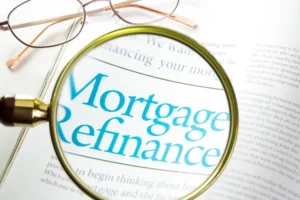I’d like to take some time to address a very common misconception amongst people with variable rate mortgages. Many people confuse their variable rate mortgage with an open term mortgage, because it is open to fluctuations to prime.
Let me be very clear, that’s not the case. The confusion lies within the terms closed versus open, and fixed versus variable.
A mortgage can have a fixed rate with an open term (although we very rarely see that these days-in Canada anyways), or more commonly a fixed rate and a closed term.
If you have a fixed mortgage, well, obviously, your rate is fixed. You don’t have to worry about fluctuations in the prime rate. For whatever the length of your term, whether it’s one or five years, your rate is fixed. As mentioned earlier, virtually all fixed rates are closed term mortgages. What this means is that to break that term in the event that you sell the home or you try to refinance to take advantage of a better rate, or do an equity take out in the middle of the term — you will incur a penalty.
Typically, the penalty amounts to the greater of the interest rate differential or three months of interest. Essentially, if rates have fallen substantially since you signed your mortgage contract, you can expect the penalty to be quite large because it will be the interest rate differential that you will be charged. The bank will have to turn around and lend the money that you are pre-paying at a lower rate, and hence they expect to be compensated for this early termination of the contract.
If you search some of my other blog posts with regards to penalties, I’ve explained the method of interest rate differential penalty calculation in a little more detail.
The lesson for the purpose of this blog post is that fixed and closed go hand in hand in almost every single case.
If it’s not a fixed or closed, then you’re going to be looking at a variable rate. Now, there are two types of variable rate mortgages— variable open and variable closed. The underlying difference between the two, other than the actual discount off of prime of course, is that variable open can be paid off at any time with no pre-payment penalty whatsoever. The variable closed typically has a three-month interest penalty.
So you say, “Well, why would anybody take variable closed when they can take a variable open?” Well, it comes down to the difference in rate. Variable opens typically right now run you anywhere from prime plus 0.5% to prime plus 0.8%. Prime rate is 3%, so that means your rate would be between 3.5%-3.8%.
Compare that to a variable closed mortgage, which currently the discount will be around prime minus 0.20. So you’re looking at almost a point spread between the two. So you can be paying 2.8% or you can be paying 3.8%. It doesnt take a math genius to realize that the variable closed is the better option if you plan on holding the property for any length of time.
Another purpose of this blog is to address a common theme that people often come to me with: they indend to sell maybe in the next year or so, and do not want to pay a penalty.
Well, even in those cases, oftentimes the savings over a year-long period of time of getting the lower variable closed rate is better than the open option which comes with no pre-payment penalty, but also with a higher rate.
The most significant distinction here is that when considering an open mortgage, you want to figure out how long you are going to hold that property for.
Open and avoiding a penalty may sound nice in principle, but if you actually end up spending thousands of dollars more over the life of the mortgage, why bother avoiding the penalty just to pay more monthly interest?
Other Related Information
A “Variable” Mortgage Is Not Necessarily “Open”
Joint Mortgage
Mortgage Broker West Vancouver Bc





